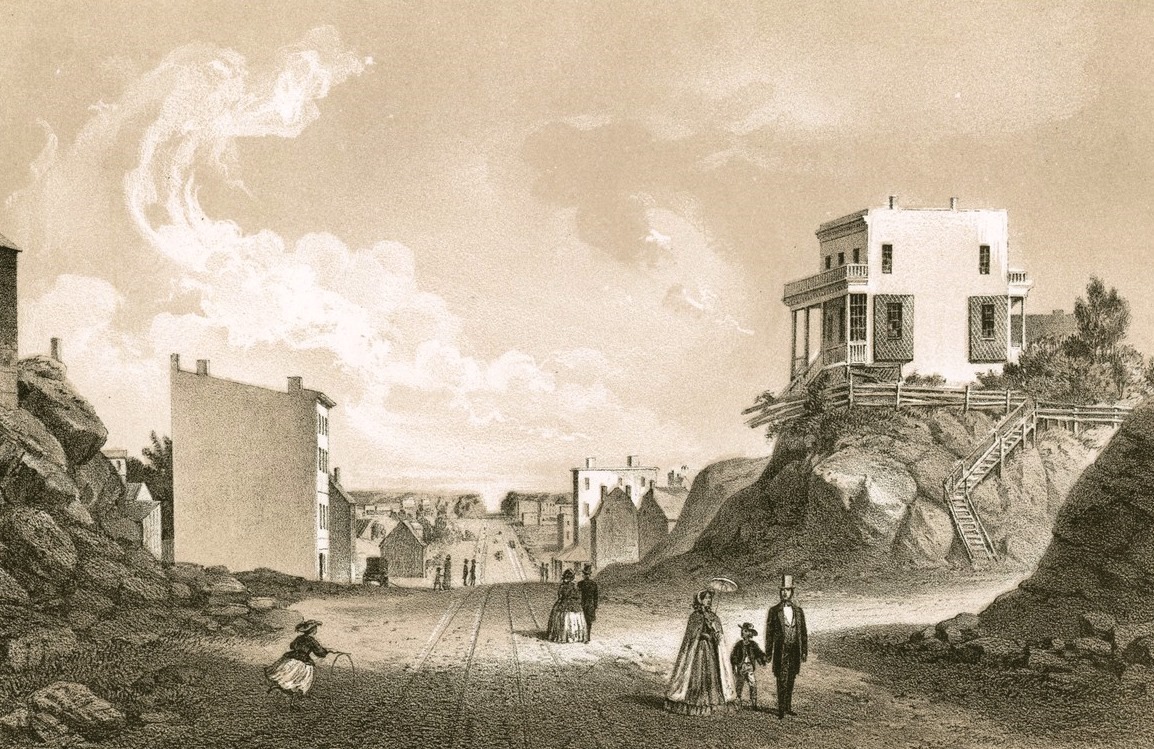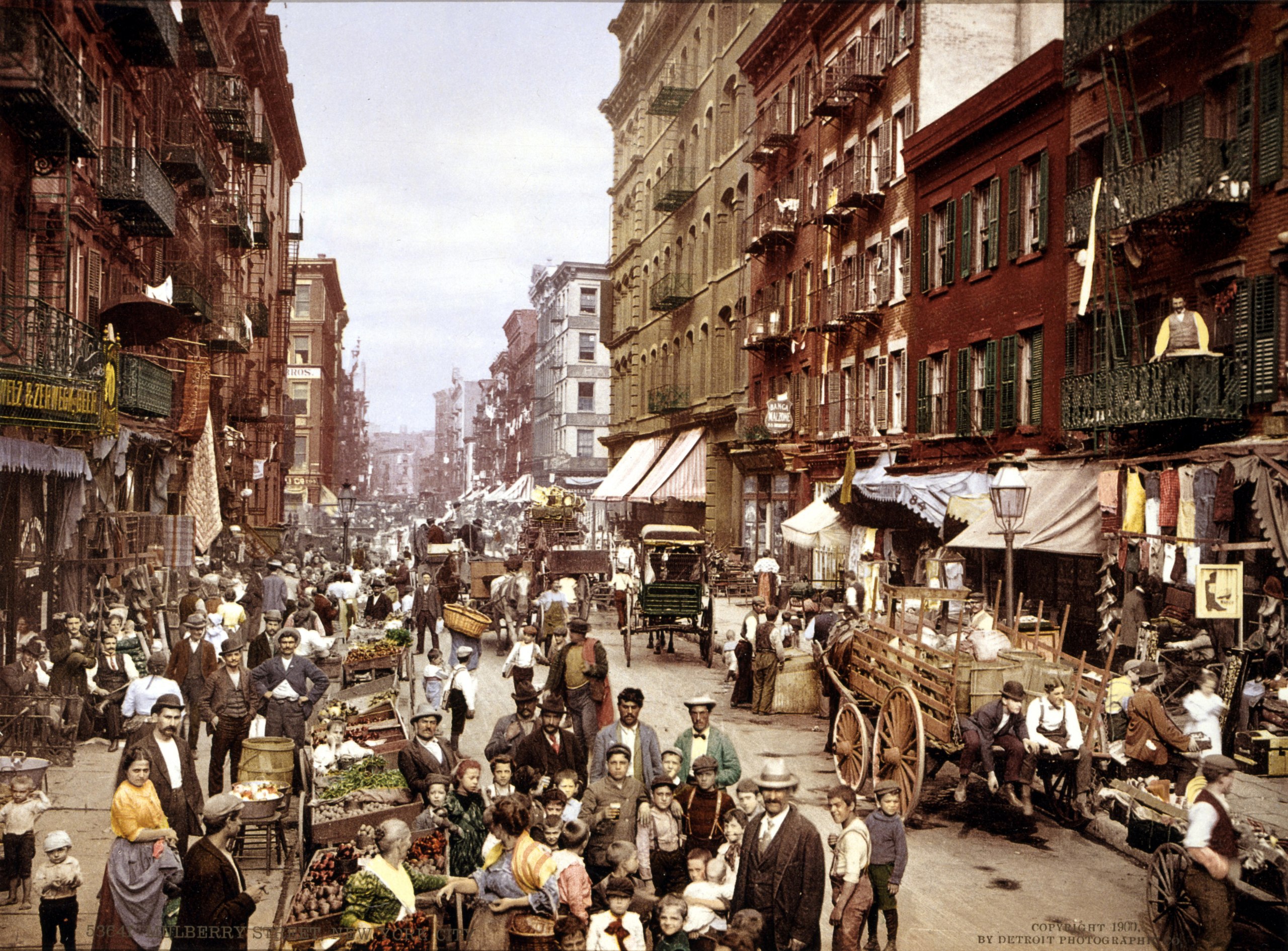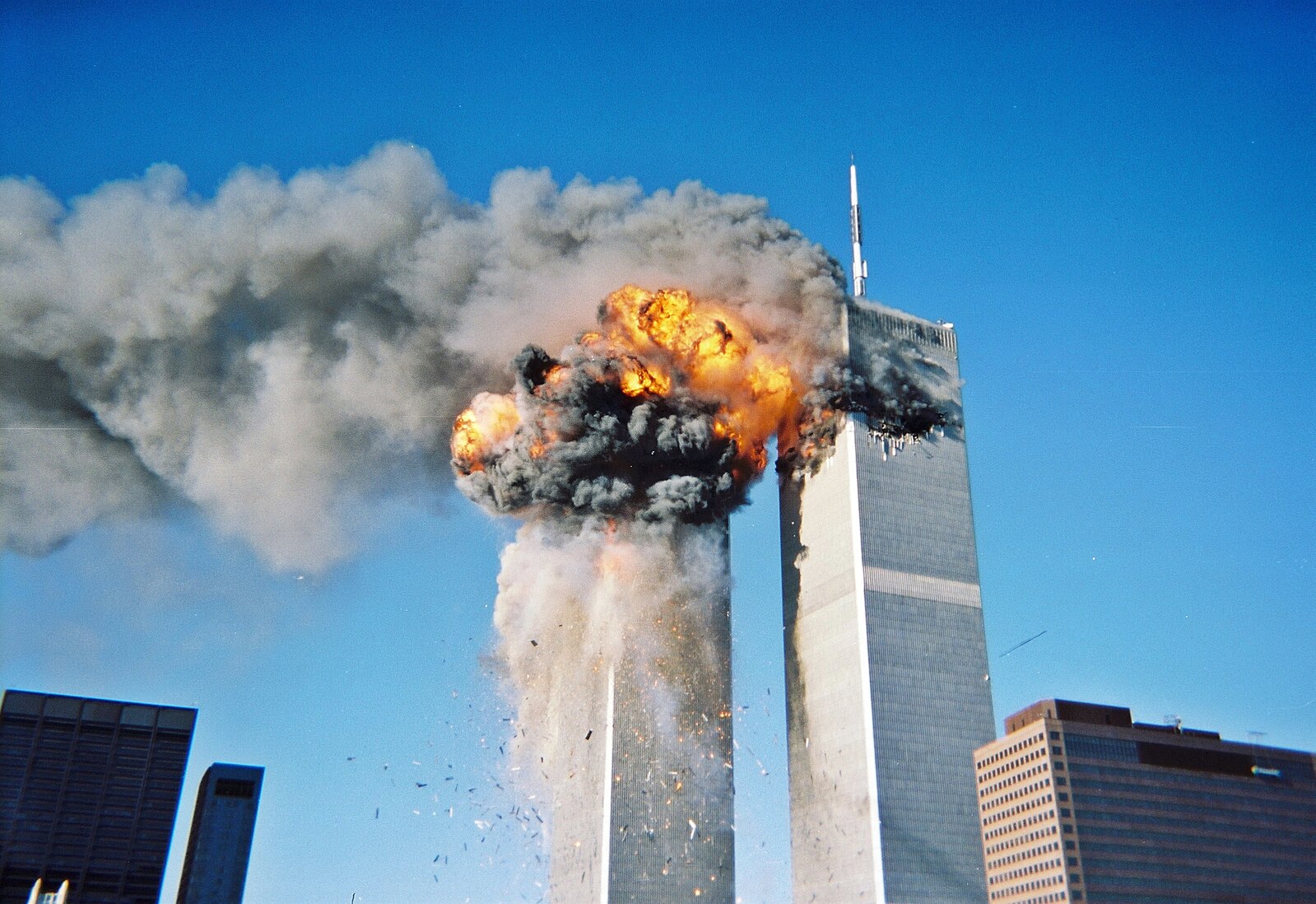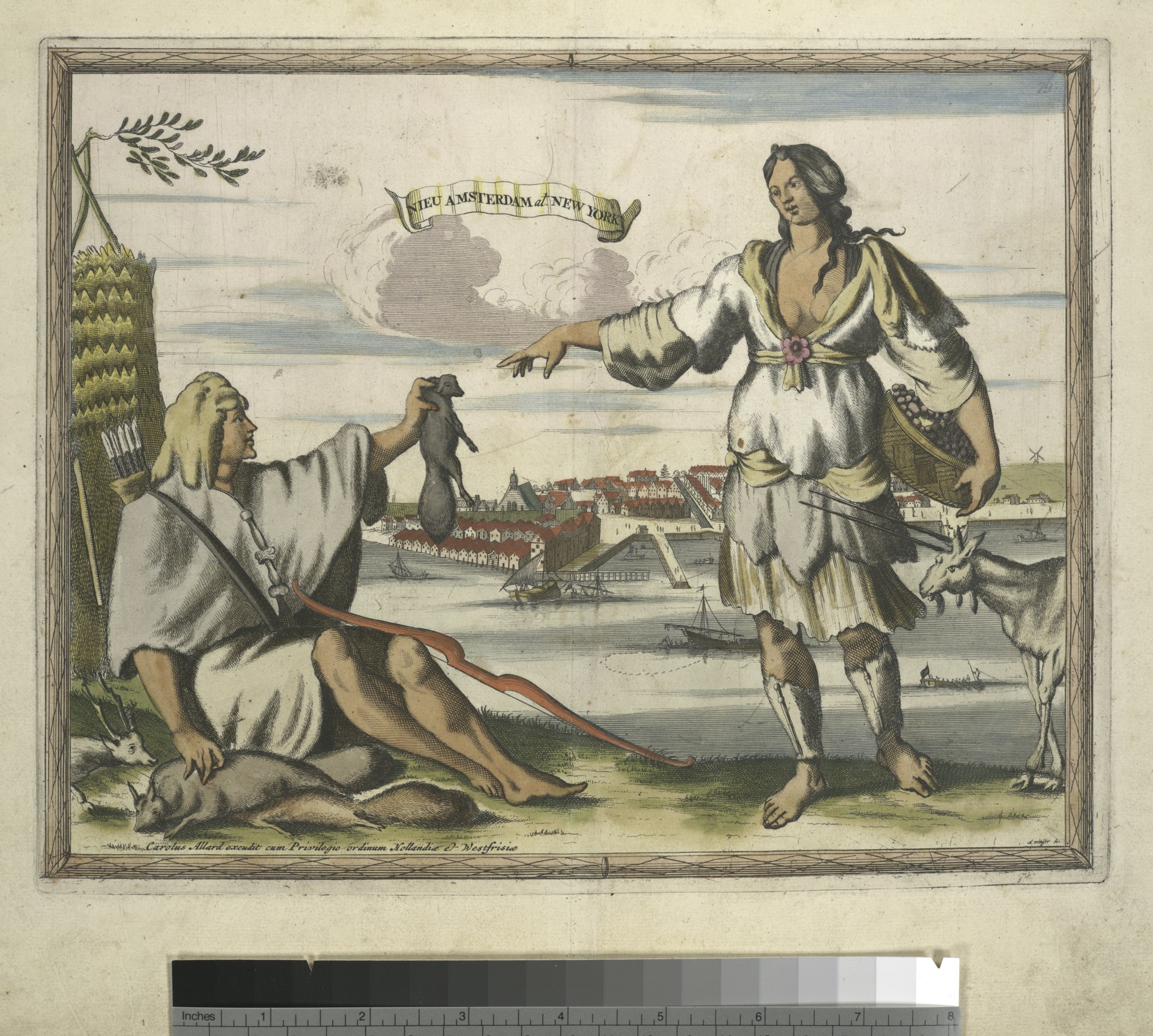Manhattan in 1873, looking north. The Hudson River is at left. The Brooklyn Bridge across the East River (at right) was built from 1870 to 1883.
The rise of New York City as a global metropolis is a complex and multifaceted historical process. Here is a detailed timeline highlighting key events and milestones in the city’s rise to prominence:
17th and 18th Centuries:
The 17th and 18th centuries were foundational for New York City, as it transitioned from a Dutch trading post to a British colonial city and then played a crucial role in the early years of the United States. Its strategic location, diverse population, and economic vitality set the stage for its continued growth and development in the centuries to come.
- Dutch Settlement (1626): New York City’s history begins with the establishment of New Amsterdam by the Dutch West India Company in 1626. It was initially a small trading post on the southern tip of Manhattan Island. Peter Minuit, the Dutch colonial director, famously purchased the land from the Lenape Native Americans for goods valued at 60 Dutch guilders.
- English Capture (1664): In 1664, during the Second Anglo-Dutch War, the English seized New Amsterdam from the Dutch and renamed it New York in honor of the Duke of York, who would later become King James II of England. This marked the beginning of English colonial rule in the region.
- Trade and Growth: Throughout the 17th century, New York City’s growth was driven by its strategic location and active trade. The city’s harbor became a hub for shipping, trade, and commerce. Early settlers engaged in fur trading, agriculture, and shipbuilding.
- Population Growth: By the 18th century, New York City had become one of the largest and most important cities in the American colonies. Its population exceeded 60,000 by the turn of the century, making it a significant urban center in British North America.
- Revolutionary Era: New York City played a pivotal role in the American Revolutionary War. In 1776, it was briefly occupied by the British, and the city served as their military and political base until the end of the war. The city’s loyalist population made it a center of political conflict during this period.
- Post-Revolution Prosperity: After the American Revolution, New York City experienced a period of economic growth and expansion. The city’s port continued to thrive, and it became a hub for trade, manufacturing, and finance.
- 1797: Manhattan’s Street Grid: In 1797, the Commissioner’s Plan of 1811 was introduced, which laid out the gridiron street plan that still characterizes much of Manhattan today. This plan was instrumental in organizing the city’s urban layout and facilitating its future growth.
19th Century:

The 19th century was a period of immense transformation for New York City. It evolved from a relatively small colonial settlement into a bustling metropolis characterized by population growth, industrialization, immigration, and the development of iconic landmarks and infrastructure. These developments set the stage for the city’s continued growth and evolution in the 20th century.
- Early 1800s – Population Growth: The 19th century saw significant population growth in New York City, driven by waves of immigration, including Irish, German, and Italian newcomers. By the early 1800s, the population had surpassed 100,000, making it one of the largest cities in the United States.
- 1811 – Commissioner’s Plan: The Commissioner’s Plan of 1811 was implemented, which established the gridiron street layout for Manhattan. This visionary plan organized the city’s streets into a grid pattern, shaping its urban landscape for generations to come.
- 1820 – Erie Canal Completion: The completion of the Erie Canal in 1820 connected New York City to the Great Lakes and the interior of the United States. This waterway became a critical trade route, propelling the city’s economic growth and solidifying its status as a major port and commercial center.
- Mid-1800s – Industrialization: The mid-19th century witnessed the industrialization of New York City. Factories, warehouses, and manufacturing facilities sprung up, contributing to the city’s economic diversity. The garment industry, in particular, began to flourish, leading to the city’s reputation as the “Garment District.”
- 1840s-50s – Immigration: The Irish Potato Famine in the 1840s and political upheaval in Europe in the 1848 Revolutions brought waves of Irish and German immigrants to New York City. Ellis Island, in Upper New York Bay, became a primary immigration processing center, welcoming millions of newcomers in the late 19th and early 20th centuries.
- 1850s – Central Park: In 1858, the construction of Central Park began. Designed by Frederick Law Olmsted and Calvert Vaux, the park provided a much-needed green space in the rapidly growing city. Central Park would become an iconic urban oasis and a testament to urban planning.
- 1863 – Civil War Draft Riots: In July 1863, New York City experienced violent Civil War Draft Riots, sparked by anger over the conscription of soldiers and economic disparities. The riots resulted in significant property damage and loss of life.
- Late 1800s – Skyscrapers and Rapid Growth: The late 19th century saw the construction of some of New York City’s earliest skyscrapers, including the Tower Building (1889) and the Flatiron Building (1902). The city’s skyline began to change dramatically as it embraced vertical construction.
- 1892 – Ellis Island Opening: Ellis Island officially opened as the primary immigration processing center. It would go on to process millions of immigrants seeking entry into the United States, becoming a symbol of American immigration.
If you want to learn more from our latest post on 19th-century American politics, delve into the intriguing world of Tammany Hall and its impact on New York City.
20th Century:

The 20th century was a period of immense change for New York City. It experienced both highs and lows, from economic prosperity and cultural vibrancy to challenges like economic crises and security threats. Despite the complexities, the city continued to evolve and adapt, solidifying its status as a global metropolis and cultural capital.
- Early 1900s – Immigrant Influx: The early 20th century saw continued immigration to New York City, with newcomers arriving from countries such as Italy, Eastern Europe, and Russia. The Lower East Side became a focal point of immigrant life, with bustling neighborhoods and cultural diversity.
- 1904 – Subway System: The New York City subway system officially began operations in 1904, revolutionizing urban transportation. It enabled rapid movement within the city and facilitated its growth by connecting boroughs and neighborhoods.
- 1913 – Grand Central Terminal: Grand Central Terminal, a Beaux-Arts masterpiece, opened as a major transportation hub in 1913. It became a symbol of the city’s commitment to modern infrastructure.
- 1920s – Roaring Twenties: The 1920s were a period of cultural and economic prosperity. New York City experienced a cultural explosion, with the Harlem Renaissance, the Jazz Age, and the birth of the modern art scene in places like Greenwich Village.
- 1929 – Wall Street Crash: The Wall Street Crash of 1929 marked the beginning of the Great Depression, leading to economic hardship and unemployment in the city. The Empire State Building, completed in 1931, stood as a symbol of hope during these challenging times.
- 1940s-50s – Post-War Growth: After World War II, New York City experienced a post-war population boom, with returning veterans and their families settling in the city and suburbs. Levittown, Long Island, became a prototype for suburban development.
- 1960s – Civil Rights Movement: The city played a central role in the Civil Rights Movement. The Harlem Riots of 1964 and the Stonewall Uprising of 1969 were pivotal moments in the fight for civil rights and LGBTQ+ rights. See Robert F. Wagner Jr.’s impact on the civil rights movement
- 1970s – Fiscal Crisis: New York City faced a severe fiscal crisis in the 1970s, characterized by budget deficits, high crime rates, and a declining urban environment. The city faced near bankruptcy and needed federal assistance to recover. Explore the journey from punitive measures to rehabilitative solutions in our newest post on the Rockefeller Drug Laws reform.
- 1980s – Financial Capital: The 1980s marked the ascent of Wall Street as a global financial capital. The city became synonymous with finance and the stock market, attracting professionals from around the world.
- 1990s – Crime Reduction: The 1990s witnessed a significant reduction in crime rates in New York City. Innovative policing strategies, such as CompStat, contributed to a safer urban environment. Learn more about the evolution of police reform, see how David Dinkins initiatives in the 90s set the stage for today’s changes.
- 2001 – September 11 Attacks: The terrorist attacks on the World Trade Center on September 11, 2001, had a profound impact on the city and the world. The loss of life and the destruction of iconic buildings reshaped the city’s identity and security measures.
- 2010s – Economic Resurgence: New York City’s economy rebounded in the 2010s, with growth in the technology sector, tourism, and real estate development. Hudson Yards, a massive development on Manhattan’s west side, symbolized the city’s continued expansion.
Following our exploration of the Great Depression’s impact on cities, see how Mayor LaGuardia navigated NYC through these challenging times. See how John Lindsay shaped New York City’s transformation during the 1960s.
21st Century:

The 21st century has brought a mix of challenges and opportunities for New York City. It continues to be a global economic, cultural, and technological hub while also facing issues related to climate change, affordability, and resilience. As the city moves forward, it remains a symbol of dynamism and adaptability, reflecting the spirit of its diverse and vibrant population.
- Early 2000s – Post-9/11 Rebuilding: The aftermath of the September 11, 2001 terrorist attacks saw a significant focus on rebuilding Lower Manhattan. The construction of One World Trade Center, also known as the Freedom Tower, became a symbol of resilience and defiance. It was completed in 2013.
- 2000s – Economic Diversification: The city’s economy diversified in the 21st century, with the technology sector, media, and creative industries experiencing substantial growth. Silicon Alley, centered in Manhattan’s Flatiron District, emerged as a tech hub.
- 2000s – High-Rise Boom: The 21st century saw a construction boom in high-rise residential and commercial buildings. Iconic skyscrapers like 432 Park Avenue and One57 reshaped the skyline.
- 2000s – Cultural Renaissance: New York City continued to be a global cultural capital, with Broadway theaters, museums, and art galleries drawing visitors from around the world. The opening of The High Line, an elevated park on a former railway track, added a unique green space to the city.
- 2010 – Hurricane Sandy: In 2012, Hurricane Sandy caused significant damage to the city’s coastal areas and infrastructure. The storm highlighted the vulnerability of the city to climate change and the need for resilience measures.
- 2010s – Tech Boom: The city’s technology sector experienced exponential growth, with companies like Google, Facebook, and Amazon establishing a significant presence in the city. Cornell Tech on Roosevelt Island became a symbol of the city’s commitment to technology and innovation.
- 2020 – COVID-19 Pandemic: New York City faced unprecedented challenges during the COVID-19 pandemic. The city was an early epicenter of the outbreak, leading to lockdowns, economic disruptions, and significant loss of life.
- 2020s – Recovery and Resilience: Despite the challenges posed by the pandemic, New York City has been working on its recovery and revitalization. Investments in infrastructure, public spaces, and affordable housing have been key priorities.
- 2021 – Mayoral Change: The election of Eric Adams as mayor in 2021 marked a new chapter in the city’s leadership, with a focus on addressing issues such as public safety, affordable housing, and economic recovery.
Final Thoughts
Throughout its history, New York City has continued to evolve, facing challenges and triumphs that have contributed to its status as a dynamic and influential global city. It remains a cultural, financial, and economic powerhouse with a rich and diverse history. Today, the city continues to move forward and grow, with new buildings, public projects, and businesses being introduced at every turn. It is now home to some of the world’s most influential businesses and institutions, and it is firmly established as a global leader in culture, finance, commerce, and media. New York City’s success is a testament to its ever-growing population and workforce, and its ability to create an environment that is conducive to growth and innovation. After reading about the challenges of early 20th-century governance, see how Al Smith navigated these waters in our latest post. Learn how Jacob Javits‘ visionary policies and projects contributed to New York City’s journey into the modern era.


